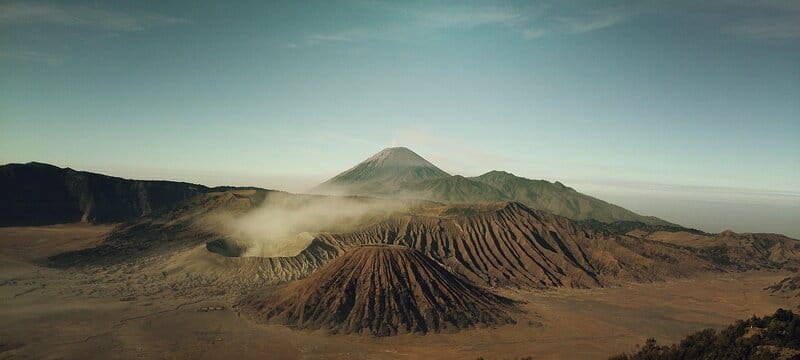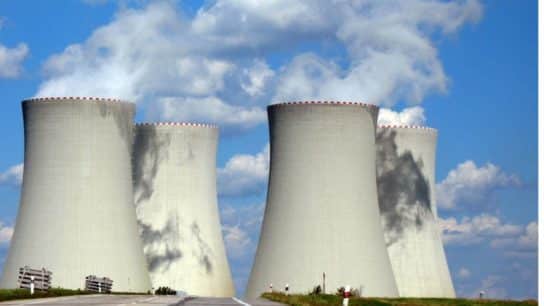What is geothermal energy and how important will it be in the clean energy transition? Engineers around the world are developing new methods of tapping into the Earth’s limitless underground supplies of heat and steam. What are the advantages and disadvantages of geothermal, where is it being used and what are the barriers to its mass-scale use?
—
What is Geothermal Energy?
Geothermal energy is the heat that comes from the sub-surface of the Earth and is contained in the rocks and fluids beneath the Earth’s crust. It can be found as far down as to the Earth’s hot molten rock, magma. To produce power from this geothermal energy, wells are dug down very deep into underground reservoirs to access the steam and hot water there, which can then be used to drive turbines connected to electricity generators.
Geothermal is typically considered to be a local phenomenon as few places sit on underground rivers of steaming hot water, which is why it is not viewed as a particularly major player in the alternative energy landscape. There are three main types of geothermal energy plants: dry steam, which takes steam out of the ground and uses it to directly drive a turbine, flash plants, which use high-pressure hot water into cool, low-pressure water and binary plants, which pass hot water through a secondary liquid with a lower boiling point, which turns into vapour that then drives the turbine.
Several types of geothermal are used today. One is called “ground source heat pump technology” (GSHP) that extracts heat from the ground and depending on the climate, the source of this heat is either the sun or geothermal energy. These pumps literally pump heat from the ground into a space, often homes. However, as will be discussed later, a major hurdle for many homeowners is the cost, which can run into the tens of thousands of dollars per dwelling.
Another kind of geothermal energy is a “deep closed loop” which typically consists of a single hole drilled deep into the ground, then laterally for a similar length through very hot geological formations, and then back up the surface. The hole is lined with pipe and then filled with fluid, acting as a natural radiator. As the solution travels through the pipe, it is heated by the high ground temperatures and then flows to the surface.
Finally, there is the “open loop deep geothermal” system, where fluid is pumped under high pressure down a linked drill hole to break up hot rock its surface area- essentially a type of fracking. Then, water is injected in one well, naturally heated by the geology, and pumped out a production well. These two wells are in the same vicinity, but are not connected.
Where is Geothermal Energy Used?
While geothermal is a blip on the alternative energy radar, 20 countries currently use geothermal energy. The US produces 3.7 GW of geothermal electricity, enough to power more than 1 million homes, and is the world’s least producer. China is also embracing geothermal energy, developing more geothermal district heating systems than any other country. Iceland, sitting on an active geological fault line, is a pioneer in the use of geothermal energy for heating and geothermal facilities currently generate 25% of the country’s total electricity production.
In Paris, the Dogger Aquifer, first used for district heating in 1969, now supplies hot water for 250 000 homes and is expanding. The aquifer drills down nearly 2km to tap hot water, pumps it to the surface, distributes it around Paris and then re-injects it into the aquifer.
Munich, Germany, has a goal of switching the city entirely to district heating. A large geothermal plant is scheduled to go online this year to provide hot water to 80 000 houses. It is believed that Germany can go from 1.2 terawatt-hours of heat from geothermal today to 100 TWh by 2050.
A recent report by the International Renewable Energy Agency (IRENA) predicted that the output of geothermal in Europe could increase eight-fold by 2050. Additionally, a 2019 US Department of Energy (DOE) report found that by overcoming technical and financial barriers, generating electricity through geothermal methods could increase 26-fold by 2050, providing 8.5% of the US’ electricity, as well as direct heat.
You might also like: The Trump Administration Has Given Billions in COVID-19 Relief to Fossil Fuel Industry- Report
What are the Pros and Cons of Geothermal Energy?
Pros
Many experts see geothermal energy as an essential component of the world’s shift to green energy because it is capable of providing carbon-free heat and continuous baseload power to compensate for the intermittency of wind and solar.
Further, geothermal energy produces one-sixth of the CO2 produced by a natural gas plant.
Cons
Accessing deep geothermal is expensive and risky. however, countries could offer risk-mitigation strategies and financial incentives including tax benefits, cost sharing and technical research to counteract this.
Further, while rare, deep drilling and fracking are known to induce seismic activity and can cause earthquakes. A famous example is an enhanced geothermal system drilled in Pohang, South Korea in 2017. Injecting fluid at high pressure to fracture rocks to release heat caused a 5.4-magnitude earthquake that injured 135 people and caused nearly USD$300 million in damage.
While geothermal energy could be destined to play a role in the world’s clean energy future, many experts believe that it will need to be coupled with other technologies, like wind, solar and nuclear.

















